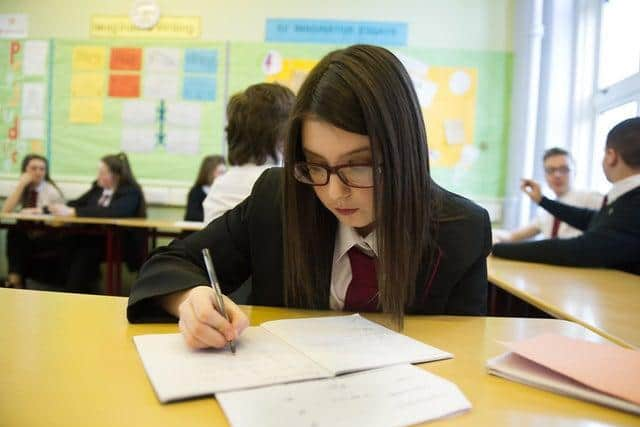Scottish teacher numbers hit highest level in over a decade
and live on Freeview channel 276
It comes after hundreds of additional teachers were recruited to address concerns over burgeoning workloads associated with the demands facing the profession during the Covid-19 pandemic.
But opponents say that numbers are still lower the level which the SNP inherited when it came to power in 2007.
Advertisement
Hide AdAdvertisement
Hide AdThe recruitment has meant average class sizes in primary schools have also fallen, a key driver of improved learning for youngsters.


There were 53,400 teachers working across nurseries, and primary and secondary schools, as well as those in special schools or centrally employed. This is 1,153 more than in 2019.
The total number of full-time equivalent teachers has risen to its highest figure since 2008, official statistics confirm.
Education Secretary John Swinney said: “I welcome this significant rise in teacher numbers, which is the largest annual increase since equivalent statistics began in 2006.
Advertisement
Hide AdAdvertisement
Hide Ad“The Covid-19 pandemic led us to take action to help pupils catch up with learning having been out of school, and we have invested an additional £80 million to recruit more than 1,400 additional teachers and 200 support staff this year – all of whom are now in place.
“A drop in class sizes is also welcome news as it is a crucial element in our ambition to close the attainment gap between the most and least deprived. As we continue to navigate through this pandemic, our focus will steadfastly remain on delivering equity and excellence.”
Average class size in primary schools fell to their smallest since 2012, down to 23.1 from 23.5 in 2019. The 2020 pupil teacher ratio for all publicly funded schools was 13.3, an improvement on 2019 when it was 13.6.
Teaching unions have raised concerns over the additional workload they have faced as result of the Covid-19 pandemic, including the need to manage classroom contacts with potentially infected pupils and reporting cases to school bosses.
Advertisement
Hide AdAdvertisement
Hide AdThe decision to cancel Scotland's entire exams diet next year will place additional burdens on teachers, who will now be tasked with providing estimates for each pupils' grade in National 5s, Highers and Advanced Highers.
It has prompted concerns from union chiefs they could be treated as "unpaid SQA markers”.
Scottish Conservative education spokesman Jamie Greene said: “The SNP are patting themselves on the back today for cutting teacher numbers by thousands since 2007 and only starting to recognise the problem that they created years too late, once our schools had already slid down international league tables.
“Under the SNP’s leadership, Scotland’s schools came into the pandemic understaffed and unprepared. There are still nowhere near enough teachers to deliver the same high standard of schooling that was possible before the SNP came to power."
Advertisement
Hide AdAdvertisement
Hide AdLabour education spokesman Iain Gray added: “The SNP has failed to boost teacher numbers and support pupils despite 13 years in power.
“Despite improvements on last year’s statistics, the SNP is still unable to match the level of teachers provided by the Scottish Labour-led Executive in 2007.
“Scotland’s pupils have endured a wasted 13 years under the SNP. It’s time for the SNP to take action to reverse the damage it has done to schooling in Scotland.”
A message from the Editor:Thank you for reading this article. We're more reliant on your support than ever as the shift in consumer habits brought about by Coronavirus impacts our advertisers.
If you haven't already, please consider supporting our trusted, fact-checked journalism by taking out a digital subscription.
Comment Guidelines
National World encourages reader discussion on our stories. User feedback, insights and back-and-forth exchanges add a rich layer of context to reporting. Please review our Community Guidelines before commenting.
